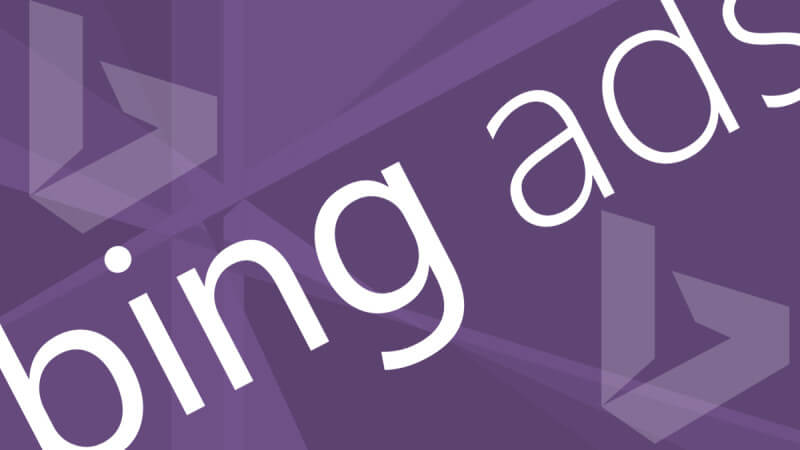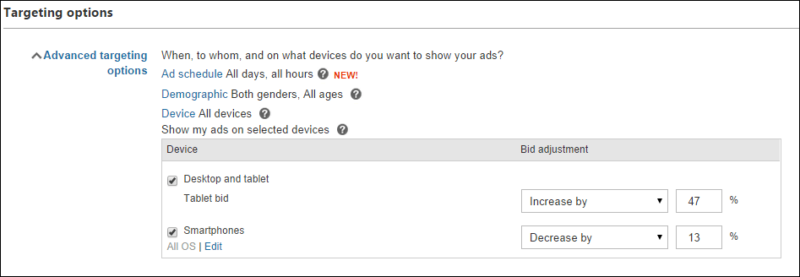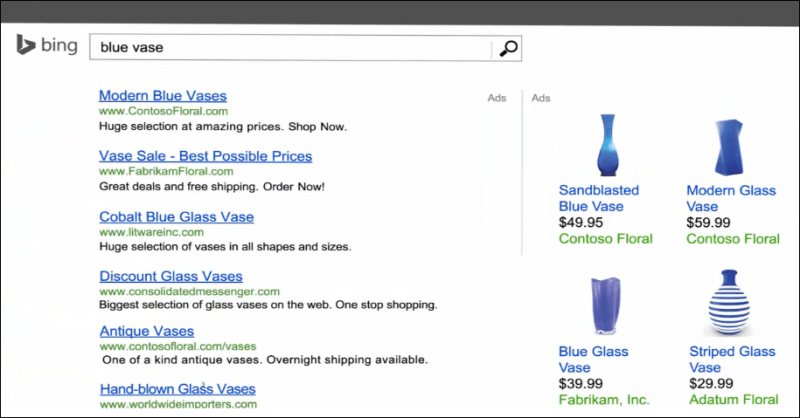Bing Ads beats Google AdWords? Well, yes, when it comes to partner segmentation. Columnist and speaker Rebekah Schelfout shows you all the ways Bing Ads is improving.
If you weren’t able to make it to SMX East to hear me and my fellow panelists present about Bing there’s no need to feel sad. I’ve summarised a few of the top things you would have picked up from our session below!
First, let me introduce the speakers:
- Paul Corkery, Senior Program Manager, Microsoft
- Jake Hoopes, Director of Product Development, Showroom Logic
- Rebekah Schelfhout, Group Head – Search, Periscopix (That’s me!)
1. Bing Is Not As Annoying As It Used To Be
Yes – that’s right; I said the unthinkable. Bing is actually much easier to use now, thanks to a visual refresh. It has a load more new features that will mean optimisation and reporting no longer take up half your week!
One of the biggest changes Paul spoke about was that you can now make bulk changes in the interface for up to 1 million keywords. In addition, you can view up to 500,000 ads and 250,000 ad groups.
These familiar features are now also available in Bing:
- Enhanced site links
- Negative keyword libraries
- Top movers reports
- Improved radius targeting
You do still need to look outside of the interface for some reports, but this doesn’t mean you should just ignore these features.
If you haven’t already downloaded the Bing Ads Intelligence Tool here’s the link. (Make sure you’re using a Windows-based computer and have Microsoft Visual Studio Tools and Microsoft Office Excel 2007, 2010 or 2013 installed before downloading.)
By far the most interesting feature in this tool is the Auction Insights report which gives you very similar data as its counterpart within Google.
We all know your relationship to competitors will vary between Google and Bing, but through using this report, you can actually prove where you’re able to gain a more competitive advantage through running on the Bing platform.
2. Bing Can Beat Google When It Comes To Search Partner Segmentation
Jake Hoopes ran us through a case study in which he had split out his campaigns to separate Bing partner sites from Bing- and Yahoo-owned properties. This is really cool and is often underutilised as most people — habituated to using Google — don’t realise that you can split these two out.
The search partner network often performs very differently from the owned and operated properties; but on Google, there is little you can do about this. However, with Bing you can. If you see vastly different performance, why not split these out into separate campaigns so you can manage budgets and bids differently.
The image below shows how you can set this up.
You also have added transparency with Bing in that you can pull a report for each partner and actually exclude partners that are not performing well for you.
3. You Can Go Way More Granular With Bid Adjustments On Bing
I spoke about the benefits of bid adjustments on Bing being at ad group level. We’d love to see this feature implemented on Google, but it often goes underutilised on Bing.
Firstly, you can adjust bids for locations at ad group level, which is pretty amazing in itself. On Google, we have to split these out into separate campaigns if we want to bid differently for them for certain ad groups.
Secondly, you can also do this for ad scheduling, demographic and device bidding!
As you’ll probably be aware, Bing has started transitioning to enhanced campaigns; and as part of that move, desktops and tablets (and smartphones post-Christmas) have to be run out of the same campaign.
The game changer here is that Bing will actually allow you to add bid adjustments for tablet. If you have a campaign on Google that performs exceptionally well on tablets and you can’t do anything about it, start running that campaign on Bing, too, and you’ll be able to add up to a 300% bid multiplier for tablets.
4. Make Sure You Understand What Normalisation Is & How It’s Changing
If you haven’t heard of this term before, then it could be that you’ve not been fully aware of which searches are leading to which keywords in your accounts.
Normalisation is the process of stripping noise terms such as “in,” “from,” “to,” accents, hyphens, etc. from your keywords and searches.
In the past, when you uploaded campaigns into Bing, you would have received quite a few error warnings for duplicates. This is because Bing was normalising your keywords.
For example, if you had the term [net a porter] and [net porter], Bing would consider this a duplicate and would remove one of the terms from the upload. All traffic from both [net porter] and [net a porter] search queries would then flow into the keyword [net porter].
Bing made a change back in June 2014, which meant that duplicate keywords were accepted into the user interface, so you no longer see annoying error messages; however, the internal process of matching up queries to keywords is still happening in the same way.
If you were advertising on [flight from London to Paris], then Bing would strip this down to have all terms to do with flight, London, Paris coming into the same keyword. With this in mind, you could never tell if you were advertising to people looking to go to Paris or fly from Paris. Confused? Yes!
Bing realised this is confusing, too! From early 2015, this process will be changing to be similar to that on Google, whereby your search queries will actually match up with the matching keyword. This will allow a greater level of control over keywords and bids, which is great.
In addition to being aware of this process, you also need to know that close variants on exact match is being tested, meaning exact match is no longer “exact.”
You’ll need to drill down to the search query report level to see if Bing has pulled in misspellings, plurals, stemmings or common abbreviations. If you find this isn’t working out for you, Bing has kindly given us the option to opt out; so, take advantage of this if you need to.
5. Bing Now Has Product Ads (U.S. Only For Now)
Everyone knows how well these work for Google. If you have a U.S. billing address, are advertising products with SKUs and sell products online with a secure checkout option, then you should have these set up in time for Christmas or you’ll be missing out on revenue.
You can find more information on how to set these up here. If you’re not a U.S. advertiser, watch this space and hopefully these will be rolling out to other countries soon.
For More Information
You can find the slide shares from our presentations below and feel free to post here if you have any further questions about the topics we presented.
Paul Corkery
Rebekah Schelfhout
Jake Hoopes








